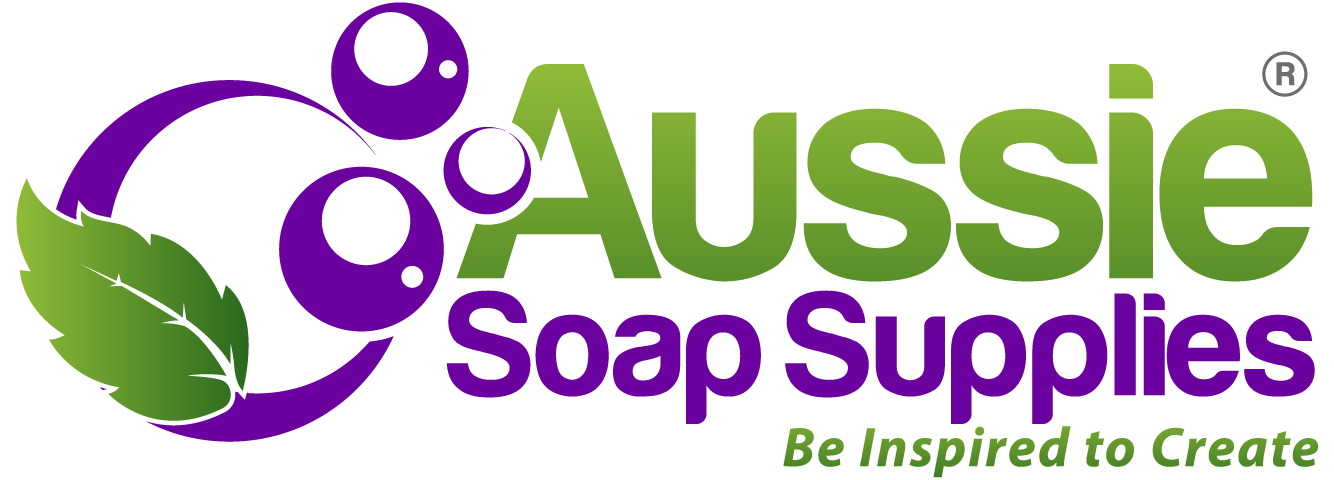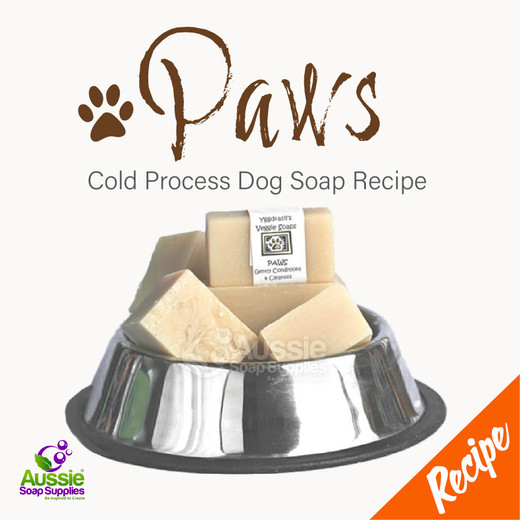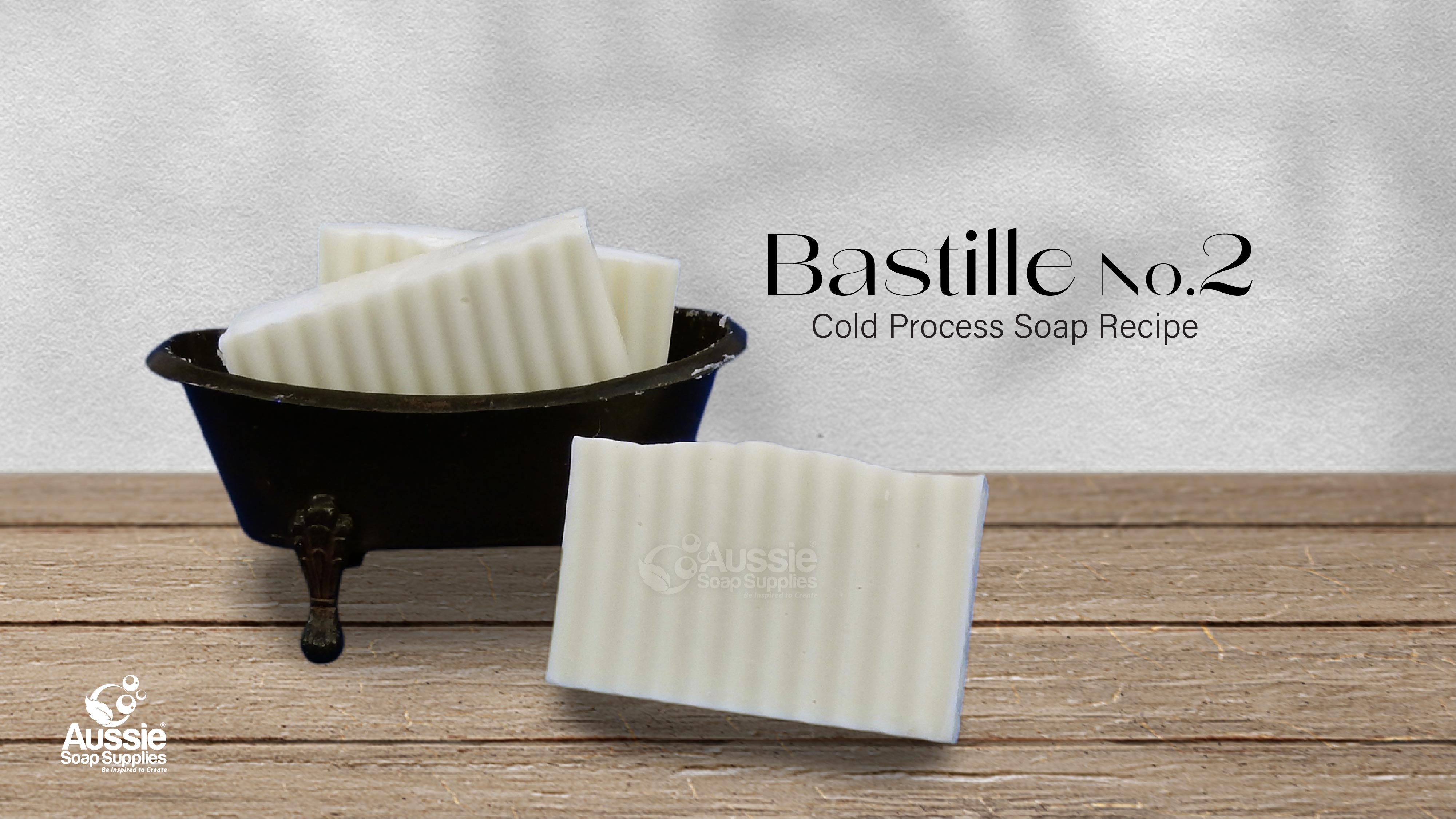
If you haven't made our Bastille No. 1 Recipe, I'll explain what bastille soap is here too ☺
As a general rule, we select oils for our soap that produce a hard bar that is mild, cleansing, has large bubbles and is moisturising. Adding luxury butters such as Shea, Mango and Cocoa Butter adds to the properties of the bar and assists with hardness and curing.
100% Olive Oil soap takes a good 4 months or more to achieve a good lather and not feel slimy when you wash with it. By adding a small percentage of other oils you have a better, faster cure. Sodium Lactate helps with hardness, unmoulding and gives a lovely shine to the soap.
Some people, young and old, have sensitive skin that can be irritated by the extra cleansing power of coconut and other oils, so will opt for a soap recipe that is more in line with pure castile soap with 100% Olive Oil, or "bastille" soap that has a preponderance of Olive Oil, but also includes other oils as well. This is one of those "bastille" recipes. It contains mostly Olive Oil (78%) and Castor Oil (11%). The addition of 11% Shea Butter contributes hardness and a moisturizing boost. Because this soap contains a high percentage of Olive Oil and we are using a silicone mould, the addition of some Sodium Lactate will make unmoulding easier, and give a harder, shinier bar after curing.
I tend to stick to one clean fragrance or essential oil for my uncoloured, castile and bastille batches but this is purely personal!
Ingredients:
- 700g Olive Oil
- 100g Castor Oil
- 100g Organic Shea Butter
- 280 - 340g Distilled Water - If you are new to soaping use the larger amount
- 115g Sodium Hydroxide (Lye)
- 20g/ml Sodium Lactate Plus
- 45g/ml Fragrance or Essential Oils of choice - I like either your preferred Fragrance or Lavender Essential Oil for this particular recipe
- Flexible Mould - Loaf (Regular)
- Crinkle Cutter
Equipment:
All your regular Cold Process Soap making equipment and Safety Gear including Goggles and Gloves
Small beaker to hold the Fragrance - helpful, not essential
Isopropyl Alcohol and Sprtizer Bottle – optional – to prevent soda ash if you decide on a textured top
Method:
If you are a beginner, we recommend you make a few batches before attempting this soap due to it taking longer to trace. For how to make soap from Scratch, please see our Cold Process Soapmaking Instructions. You can also watch Soap Queen's You Tube Series on Cold Process Soapmaking. I like to pour when it's at heavy trace and insulate well to encourage gel.
- Combine oils and lye water, Sodium Lactate Plus and bring to medium trace. This will take about 5 minutes of stick blending.
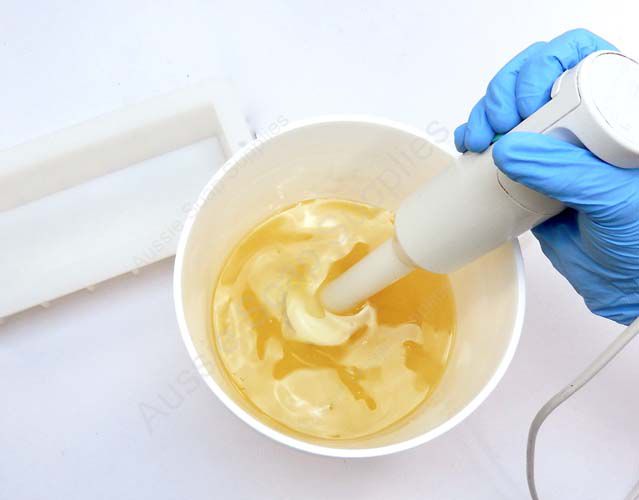
- Add fragrance and combine well, trace will thicken a little.
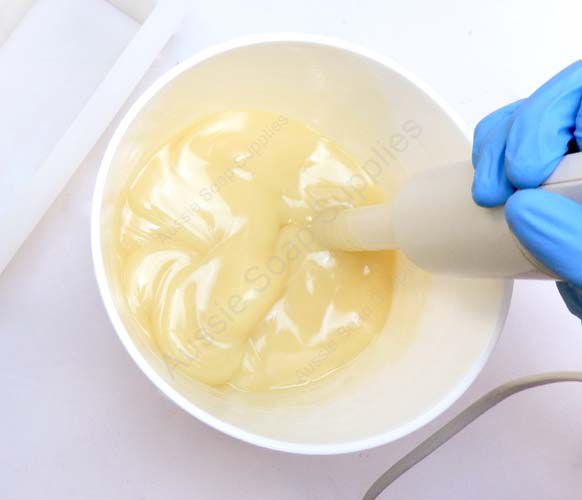
- Insulate to encourage an even, hot gel.
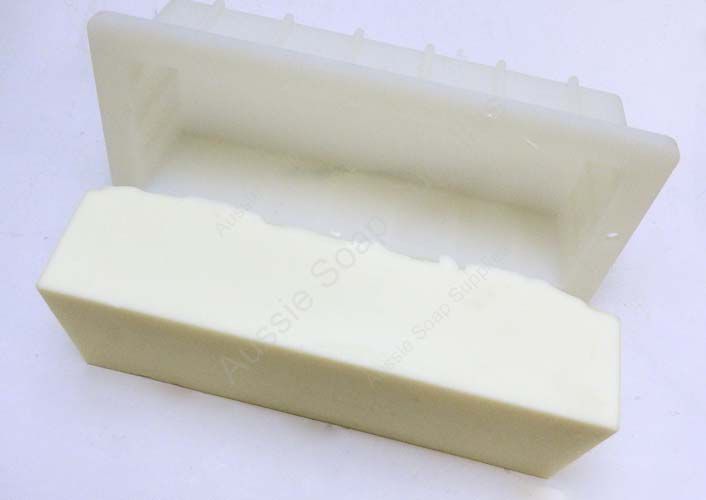
- Unmould after several days to a week or so and allow to finish curing for at least 6 weeks, prefereably longer due to the high olive oil content..
| Palm Oil Free: | Yes |
| Difficulty: | Experienced Beginner |
| Yields: | 10 - 14 bars |
| Time: | 1 hour |
| save: | No |
| sale: | No |
